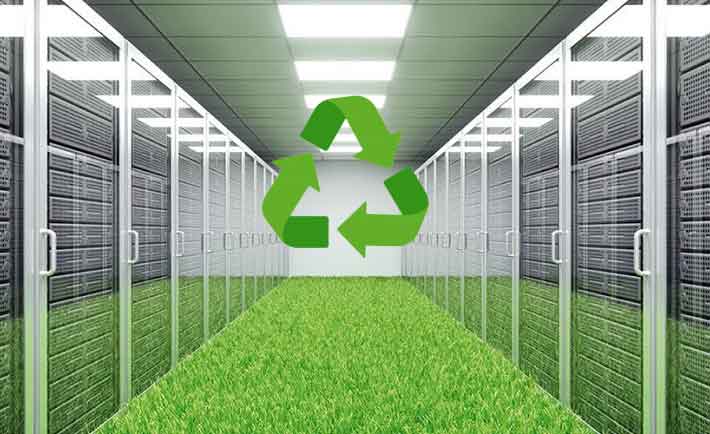Key Strategies for Sustainability in Data Centers
Adopting a sustainable approach requires a combination of strategies in design, operation, and management:
1. Energy Efficiency: The Fundamental Pillar
- Renewable Energy Sources: Use solar, wind, or hydroelectric power, either directly through own facilities or through Power Purchase Agreements (PPAs) with clean energy providers.
- Advanced Cooling Systems: Implement liquid cooling (immersion or direct-to-chip), free cooling systems (using cold outside air), hot/cold aisle containment, and airflow optimization to reduce the energy consumed by cooling.
- Next-Generation Hardware: Invest in servers, storage, and networking equipment with high energy efficiency, designed to consume less power per unit of performance.
- Virtualization and Consolidation: Maximize the use of existing hardware resources through server virtualization and workload consolidation, reducing the total number of physical devices in operation.
- Energy Monitoring and Management (PUE/DCiE): Measure and optimize metrics such as PUE (Power Usage Effectiveness) to ensure that most of the energy is used for IT equipment rather than supporting infrastructure.
2. Water Management
- Water-Free or Low-Consumption Cooling: Prefer cooling systems that minimize water use, such as air-based or closed-loop evaporative cooling, and reuse water whenever possible.
3. Waste Management and Circular Economy
- Hardware Recycling and Reuse: Implement rigorous recycling programs for end-of-life equipment and explore refurbishment or donation options to extend hardware lifespan.
- Sustainable Building Materials: Use low-impact, recycled, or locally sourced materials in the construction and renovation of facilities.
4. Smart Design and Location
- Climate Optimization: Locate data centers in cold climate regions to maximize the use of free cooling.
- Modular Design: Building data centers with a modular approach allows capacity to be scaled as needed, avoiding overbuilding and unnecessary resource consumption.
Benefits of Adopting Green Data Centers
Investing in sustainability is not just a matter of corporate social responsibility; it also provides tangible benefits for organizations:
- Reduction of Operating Costs: Lower energy and water consumption directly translates into reduced bills, generating significant long-term savings.
- Improvement of Reputation and Brand: Demonstrating a commitment to sustainability attracts customers, investors, and talent who value responsible business practices.
- Regulatory Compliance and Competitive Advantage: Anticipating future environmental regulations and carbon taxes can create a competitive advantage and help avoid penalties.
- Higher Reliability and Performance: Efficient thermal management and the use of quality hardware can reduce the risk of overheating failures and improve overall performance.
- Access to Green Incentives and Financing: Some governments and organizations offer tax incentives, grants, or low-interest loans for green infrastructure projects.
- Attracting and Retaining Talent: Today's professionals, especially younger ones, seek to work for companies with a strong social and environmental commitment.
- Positive Environmental Impact: Contribute to reducing greenhouse gas emissions and promoting more efficient use of natural resources.
Green data centers are not a passing trend but an imperative necessity for the future of our digital infrastructure and the health of our planet.



